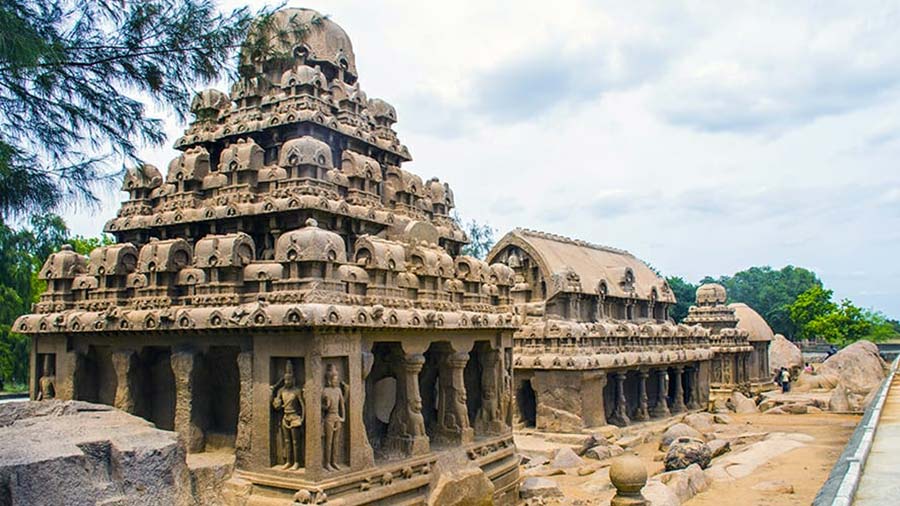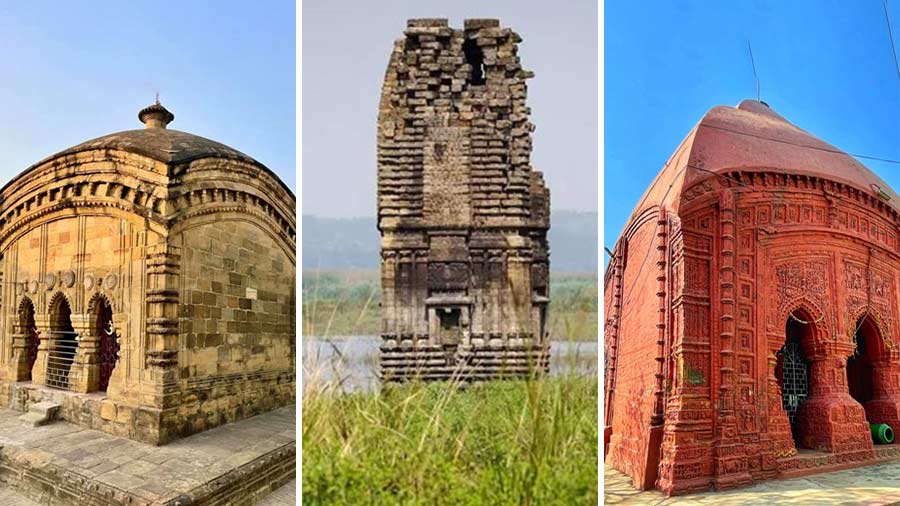For lovers of Indian architecture and heritage structures, Mahabalipuram’s Pancha Rathas has always had huge appeal. A monolithic temple complex, Pancha Rathas — also known as Pandava Rathas — dates back to the 7th century CE and was probably built during the reign of Pallava king Narasimhavarman I (reign 630-668). Like most specimens of monolithic rock-cut architecture, the structures have been carved from one large rock, a gruelling endeavour that required the sculptors to work their way down from the top of the monolith. Considering the age in which it was built, the temple complex stands as a true testimony to the absolute brilliance of ancient India’s advanced architectural capabilities. Today, the site is a part of what is known as the Group of Monuments at Mahabalipuram, a UNESCO World Heritage Site.
As the name suggests, the complex consists of five temple-like structures dedicated to the five Pandava brothers — Arjuna, Bhima, Yudhisthira, Nakula, Sahadeva — and their wife Draupadi. Among the four temples, the northernmost is dedicated to Draupadi, followed by Arjuna, Bhima and Yudhisthira. The fifth temple, which is jointly dedicated to the twin brothers Nakula and Sahadeva, is on the western side of the other four. The complex also houses sculptures of a lion, elephant and bull, along with a few stupa-like structures.
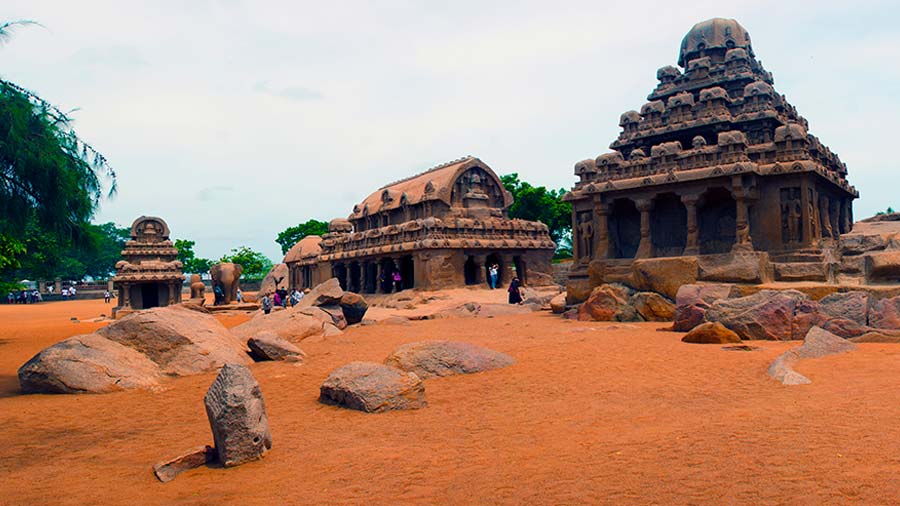
The temple complex houses five rathas dedicated to the Pandava brothers and their wife, Draupadi
Draupadi Ratha
Built in the form of a thatched hut, the Draupadi Ratha is the smallest of the shrines, with four sloping roofs, an architectural design uncommon in south India, but quite prevalent in the 17th & 18th-century brick temples of Bengal. The entrance to the monument is on the west and is guarded by statues of darpalika (female sentinels). The entrance leads to the interior that houses an elaborate panel depicting the Goddess Durga flanked by several other sculptures. The other three walls have carvings of Durga standing on a buffalo head and the panels are in various stages of completion.
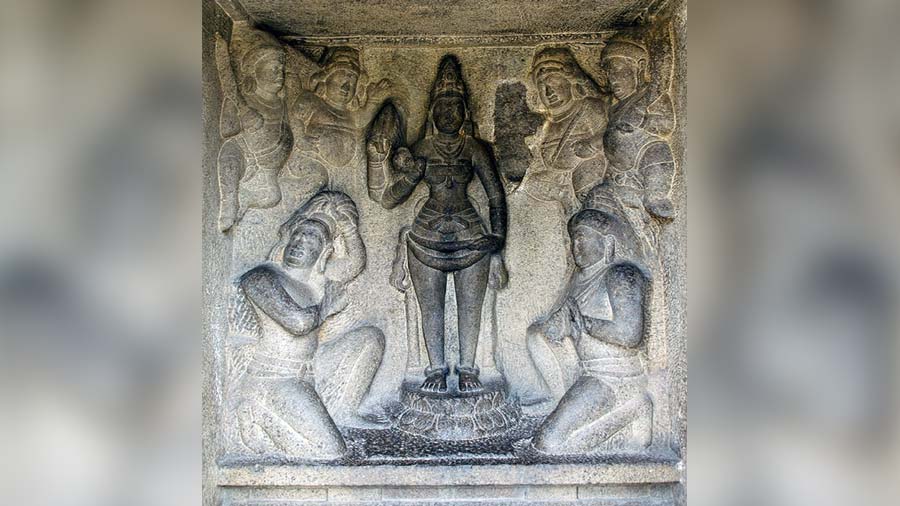
One of the panels inside Draupadi Ratha
Arjuna Ratha
Lying just south of the Draupadi Ratha, the Arjuna Ratha is slightly larger, although both stand on a single elevated platform supported by alternating lion-head and elephant freezes.
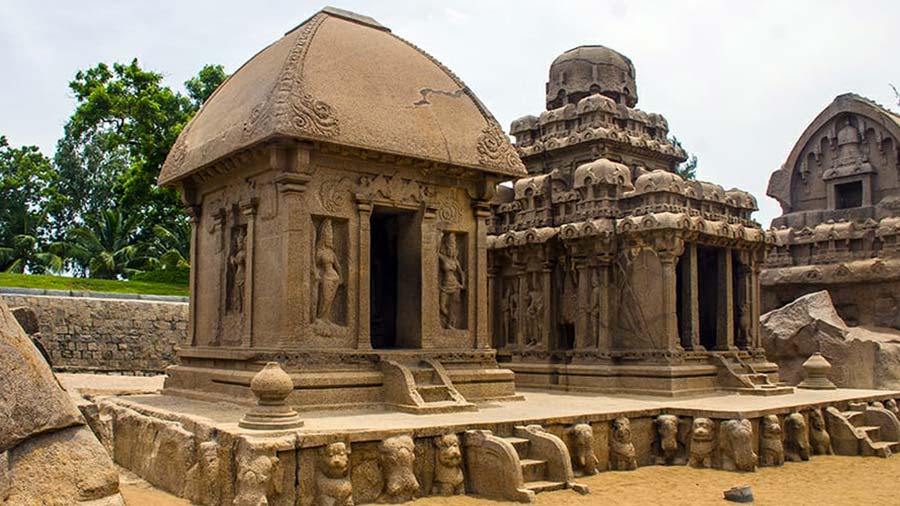
The Draupadi Ratha (left) and the Arjuna Ratha (right)
Arjuna Ratha follows the typical south-Indian temple architectural style and is topped with a vimana (tower). The entrance is through a porch on the western side and leads to an empty inner sanctum. The three remaining sides have elaborate stone freezes.
Bhima Ratha
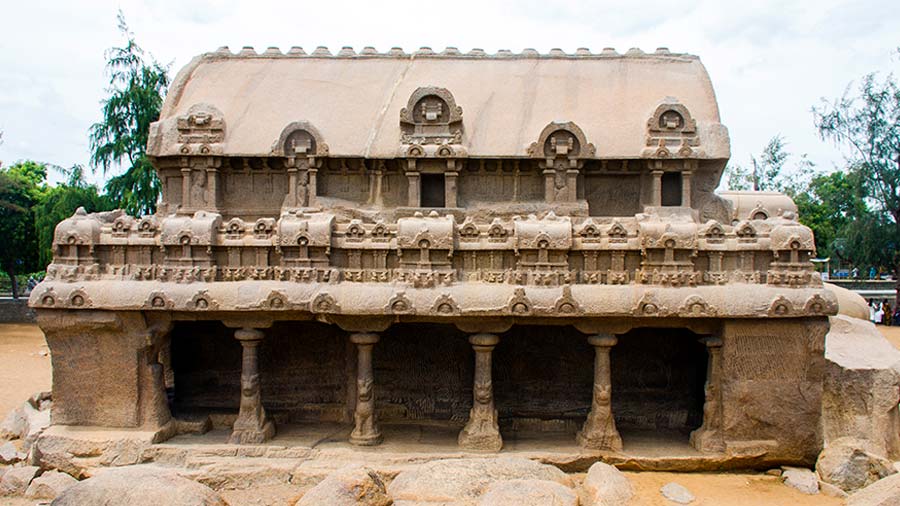
The Bhima Ratha is the most massive among all the structures in the complex
Aptly dedicated to the strongest Pandava, the Bhima Ratha is the most massive among all the structures in the temple complex. Decorative pillars mark both the eastern and western sides of the structure, which stands on a rectangular base. It is topped with a two-tiered oblong roof with intricate ornamentation. The inner sanctum is empty.
Yudhisthira Ratha
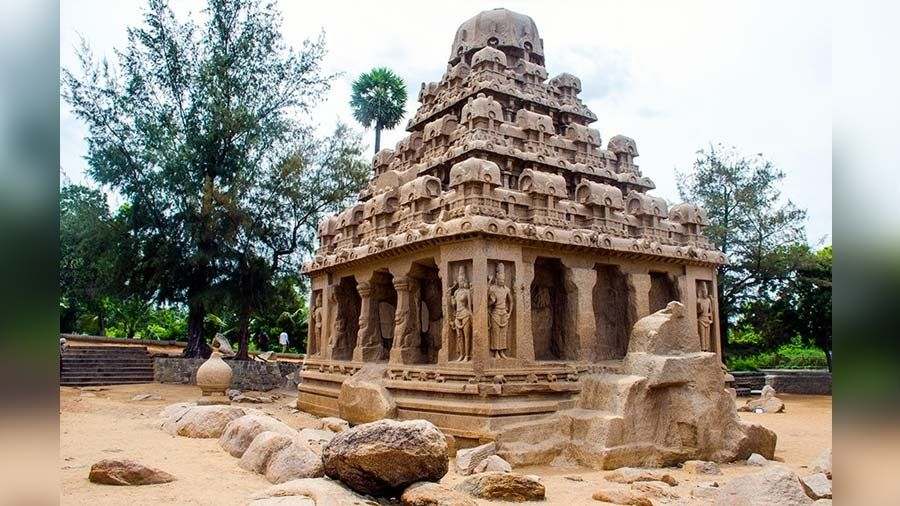
The tallest structure in Pancha Rathas
Also known as the Dharmaraja Ratha, this is the southernmost ratha in the complex. It also happens to be the tallest structure in Pancha Rathas and is crowned with a three-tiered, highly ornamented vimana. The lower floor has decorative pillars on all four sides and each of the four corners have two rock-carved statues.
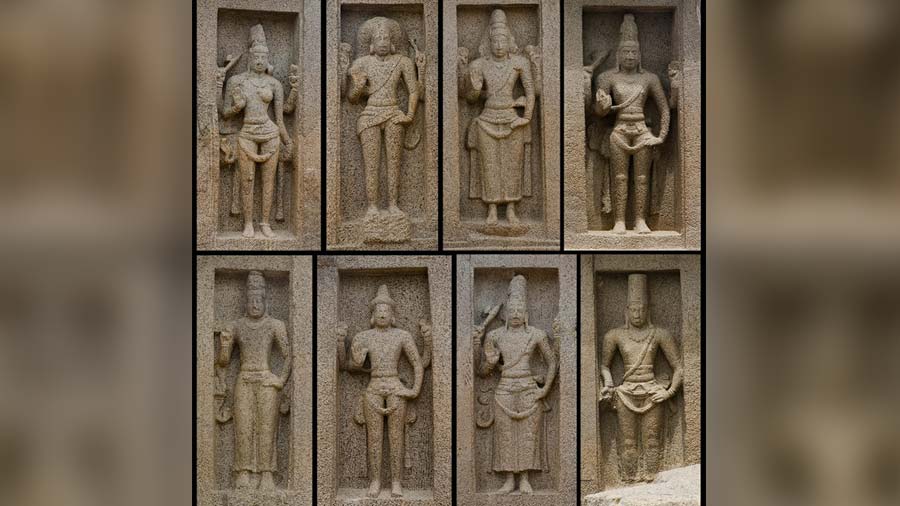
A collage of wall panels from the Yudhisthira Ratha
Nakula-Sahadeva Ratha
Unlike the other rathas, this structure faces south instead of west. It lies in front of the entrance to the Draupadi and the Arjuna Ratha and has a semi-circular northern side. One can enter the structure from the south side through an extended porch supported by two ornamental pillars. Here too, the inner sanctum is empty.
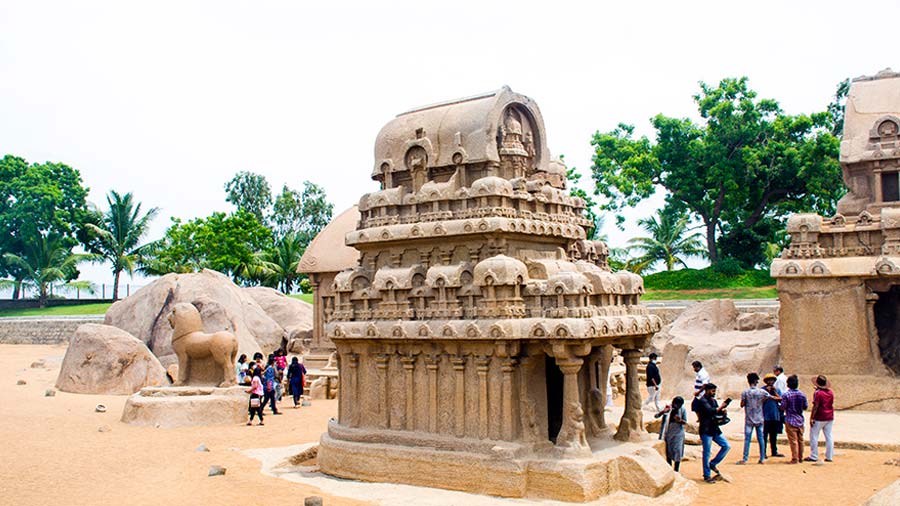
Unique among the five structures, the Nakul-Sahadeva Ratha faces south instead of west
Apart from these five major edifices, the complex also houses magnificent statues of a lion, elephant and bull.
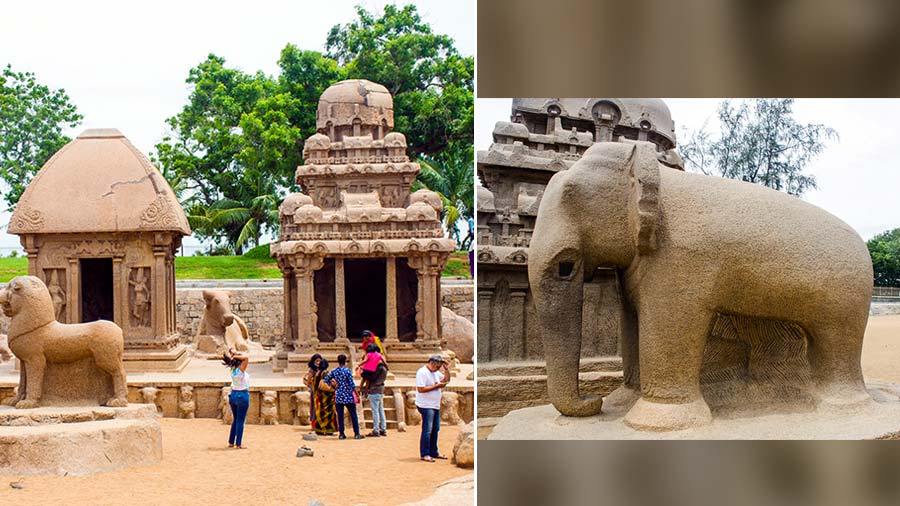
The lion and the bull statue (left) and the elephant sculpture (right)
The lion statue, located in front of the Draupadi Ratha, faces north. The elephant faces south and stands in front of the Arjuna Ratha. The seated bull structure is located east of the Draupadi and the Arjuna Ratha. There are also a few stupa-like structures with spherical domes.


